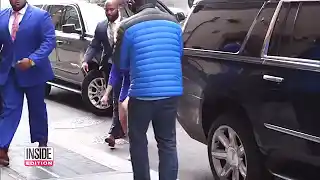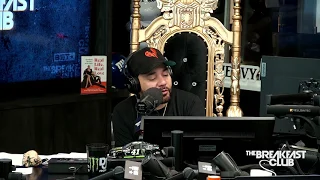A recently resurfaced article in The New Yorker has shed light on a disturbing practice that allegedly took place at Donald Trump’s Atlantic City casinos during the 1980s. Former employee Kip Brown described being instructed, along with other Black employees, to hide whenever Trump and his then-wife Ivana visited the casino floor. This incident, while unconfirmed in terms of direct responsibility, raises serious questions and adds to a growing body of evidence suggesting a pattern of racial discrimination throughout Trump’s career and public life.

John O’Donnell, former president of the Trump Plaza Casino, further fueled these concerns in his memoir. He recounts Trump expressing his distaste for Black employees handling his finances, stating his preference for “short guys that wear yarmulkes every day.” This anecdote, coupled with the allegations from Brown, paints a disturbing picture of Trump’s alleged racial bias.
Kip Brown, a former employee at Trump’s Castle: “When Donald and Ivana came to the casino, the bosses would order all the black people off the floor,” Brown said. “It was the eighties, I was a teenager, but I remember it: They put us all in the back.” https://t.co/TcA8veBf0S
— Kathy 🇨🇦🏳️🌈🌊😷🌻🍁 (@scarletkate) February 24, 2020
This pattern of discriminatory behavior extends beyond isolated incidents and encompasses Trump’s public statements and actions. The 1970s saw Trump Management Corporation, led by a young Donald Trump, embroiled in a lawsuit brought by the Nixon administration for racial discrimination in housing. The settlement, while avoiding an admission of guilt, highlighted the company’s discriminatory practices against Black renters.
Trump’s public utterances have also been marred by racial prejudice. His infamous call for the reinstatement of the death penalty following the Central Park Five case, coupled with his continued refusal to acknowledge their innocence even after exoneration, showcase his willingness to exploit racial tensions for political gain.
The birtherism conspiracy theory, where Trump questioned Barack Obama’s birthplace, further exemplifies his involvement in racial controversies. Even after the release of Obama’s long-form birth certificate, Trump’s support for the theory demonstrated his disregard for facts and his tendency to exploit racial anxieties.
Trump’s 2016 presidential campaign served as a culmination of his racially charged rhetoric. His calls for a Muslim immigration ban, his labeling of Mexican immigrants as “rapists,” and his refusal to condemn white supremacists following the Charlottesville rally all contributed to a campaign rife with racial prejudice. These statements, along with his reported disparaging remarks about immigrants from Haiti and Nigeria, solidified his image as a figure who thrives on racial division.
In conclusion, the evidence presented here paints a disturbing picture of Donald Trump’s relationship with race. From the allegations of discriminatory practices within his business ventures to his public pronouncements and actions, a consistent pattern of racial bias emerges. While some may dismiss these incidents as isolated anecdotes, their cumulative effect cannot be ignored. As we continue to examine Donald Trump’s legacy, it is crucial to acknowledge and address the deeply concerning issues of racial discrimination that permeate it.










Discussion about this post